Bryan Brinkman’s art is digital, colorful, and distinctly his own. The Omaha-born, New York-based animator and former television graphics artist has become a recognizable voice in blockchain-based art, but while he may be best known for his cutesy looping animations and clever visual commentary on web3 culture, Brinkman is no stranger to creative reinvention.
Once a behind-the-scenes graphics artist at The Tonight Show, Brinkman began minting NFTs in 2020. His early pieces were created using GIFs, mixing traditional animation and 3D rendering software, often playing with movement, repetition, and visual irony. Over time, his work has expanded to include code-driven animation, dynamic, and interactive pieces.
Each of Brinkman’s releases is part of what he considers a long-term catalog. Rather than separate projects, he designs his works to reference and build on one another and create a layered record of his career and the evolving digital art scene.
He has released collections through platforms including SuperRare, Nifty Gateway, and Art Blocks Curated, and has collaborated with artist-focused groups like The Memes by 6529, Noble Gallery, and ClickCreate.
In a recent conversation with OpenSea, Brinkman talked about how his work has changed since he started minting, what it’s like working in the NFT space full time, and how he thinks about long-term preservation in a fast-moving digital environment. Ahead, his perspective offers practical insight for artists, collectors, and developers working in or exploring the web3 space.
Note: This transcript has been edited for length and clarity.
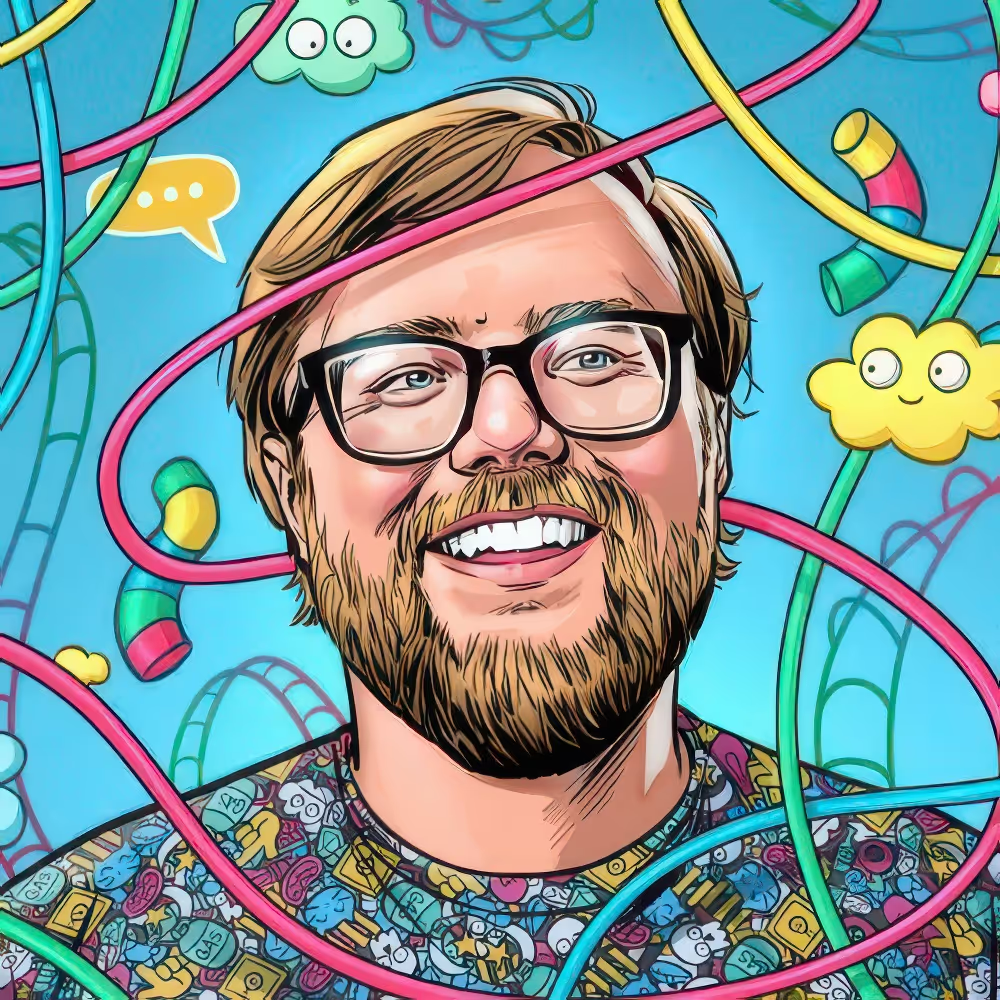
OpenSea: Let’s start at the beginning. You grew up in Omaha, Nebraska — hometown of Warren Buffett and the unofficial capital of long-term value investing. How did growing up in the land of Berkshire Hathaway influence your view of money, especially now that you’re in crypto, which couldn’t be more different from Buffett’s style?
Bryan Brinkman: Well, I would not say that my upbringing was influenced by him. You know, going to art school, finance is the last thing that you're taught. Both my parents are accountants, so I had an upbringing that was frugal. My parents instilled a lot of financial advice in me about how to save money and how to be smart with it. But I didn’t get into investing and any of that stuff until years after college.
That said, Buffet’s an interesting guy. I mean, it’s pretty incredible that every year they have this big shareholders convention and people fly into Omaha. I know artists that sell Warren Buffett-inspired books and merch and all this stuff. It’s like an artsy Warren Buffett fandom, a Comic-Con just for him, essentially. Buffett-Con!
One of the interesting things about this crypto space is that it turns everybody into a little bit of a finance bro. We’re each kind of having a crash course on investing and taxes and all sorts of stuff that I never would have been absorbing outside of this space. Prior to crypto, I was buying stocks here and there and very simple stuff, but learning about longs and shorts and all these types of trading things, none of that was ever on my radar as an artist. It was always just a matter of trying to figure out prices and how to pay the bills.
OpenSea: On that note, you’ve had quite the career so far. Before going full time as a digital artist, you animated more than 1,600 episodes of The Tonight Show, worked on music videos for Sesame Street, and had your shorts screened at global film festivals. Now you're minting NFTs, exhibiting at Sotheby’s and Christie’s, collaborating with ArtBlocks, and curating “The Brinkman Estate” like a one-man artist foundation. Do you see your work as a series of standalone pieces, or as one long, evolving narrative across traditional media and now blockchain?
Bryan Brinkman: Yes, I personally believe everything I mint adds to a bigger picture, a bigger ecosystem. In the same way that most profile picture (PFP) projects are a 10,000-item collection—though my collection is about half that size at this point—each project within my whole portfolio is like a trait within that larger whole. So each one is its own tiny piece of a bigger puzzle, which is this long-term art career I’m building on the blockchain.
And part of that puzzle is figuring out how to preserve my work. I’ve been inspired by traditional artist estates and started thinking about how to do that on a personal scale—whether that means recollecting some of my pieces, holding back a portion of sales similar to how artist proofs work, or keeping some to donate to causes, museums, or trade with other artists.
That approach gives me the flexibility to have fun with the work now while also building a bigger picture I can eventually pass down to my family.
OpenSea: What does preservation mean to you as a digital artist? Is it about on-chain storage? Metadata? Something else entirely?
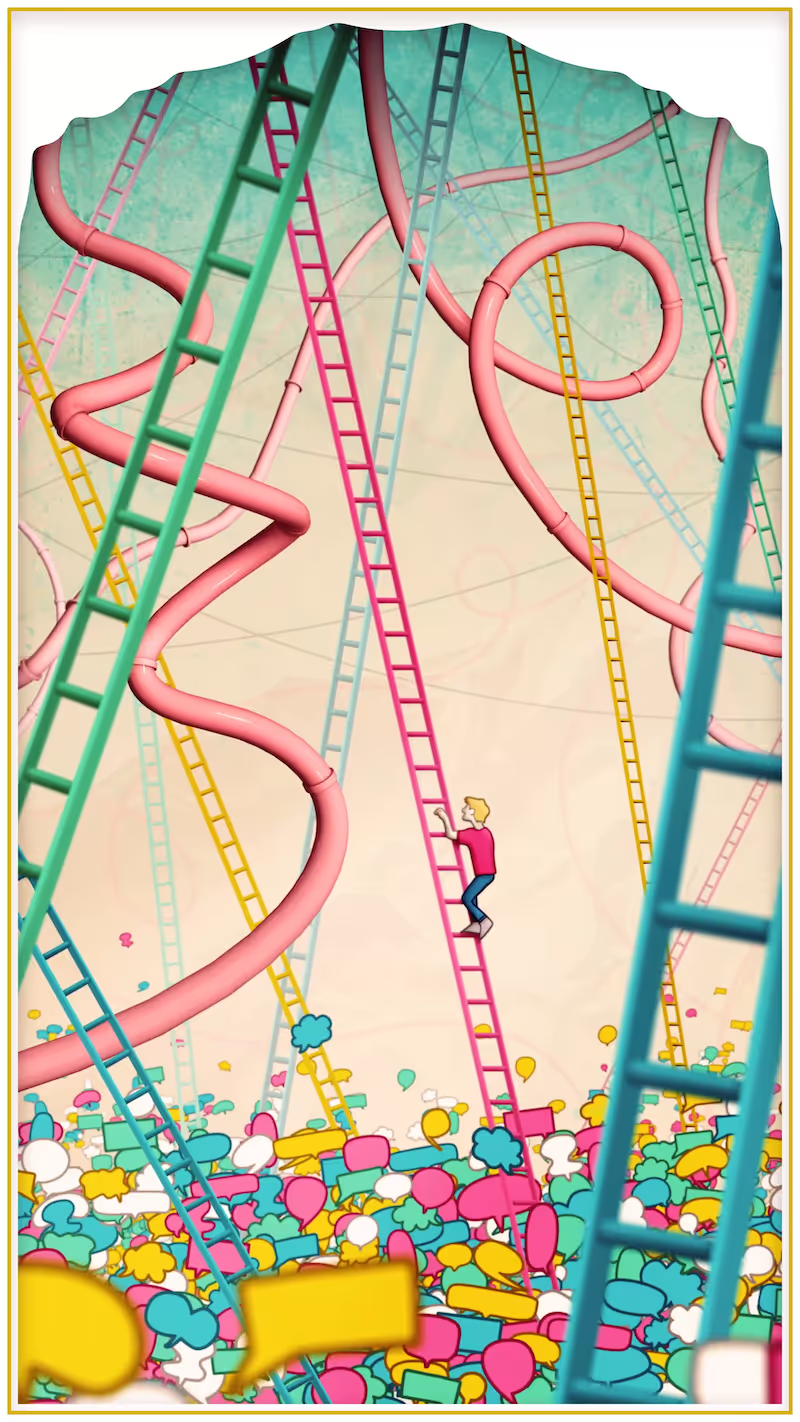
Bryan Brinkman: I love the idea of permanence through blockchain. But it’s not always feasible. Some of my works are 50MB in file size or more, and putting high-res animations fully on-chain—especially on Ethereum or Bitcoin—is just not financially practical. I use a mix of IPFS, ARWeave, and on-chain minting when possible. I’ve also worked with projects like OnChainMonkey to experiment with ordinal inscriptions that string together animation frames. It's cumbersome, but I find the technical limitations creatively satisfying.
OpenSea: So you enjoy the challenge of working within those constraints?
Bryan Brinkman: Absolutely. Ordinals, for example, remind me of the early days of NFTs, back when animated GIFs had to be under 50MB. You’d try to cram as much story into three seconds as possible. That challenge inspired a lot of my looping style. Now, the same goes for Bitcoin Ordinals. My recent piece “FL1CK3R” ” was essentially an animation stitched together from individual frame inscriptions. It’s a puzzle, but when it works, it’s really rewarding.
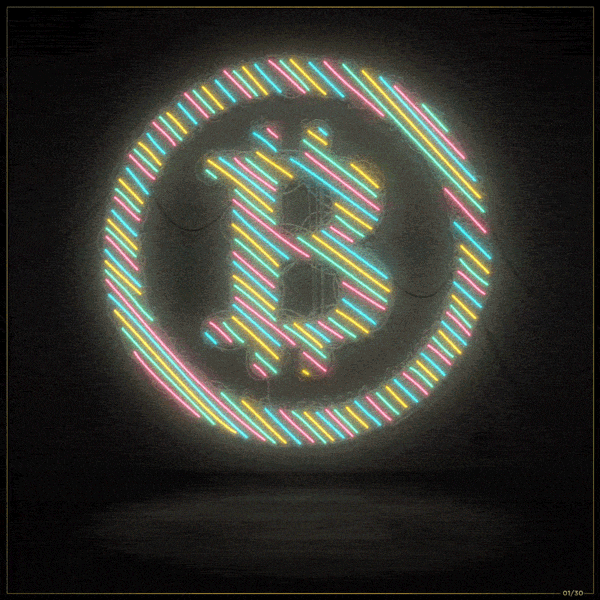
OpenSea: Your early work explored the NFT medium itself. You created pieces about gas fees, wallet stress, crypto culture. How has your point of view evolved since then?
Bryan Brinkman: At first, I was just documenting my experiences. NFTs were my Sunday side project while I worked two jobs. Over time, I started thinking more about how to build a cohesive narrative across pieces. My “Self-Assemblage” piece with Christie’s is probably the most “me.” It’s a self-portrait made of past works—a visual representation of how each piece I make becomes part of the whole. It’s a reminder that everything we create adds weight to the story we carry.
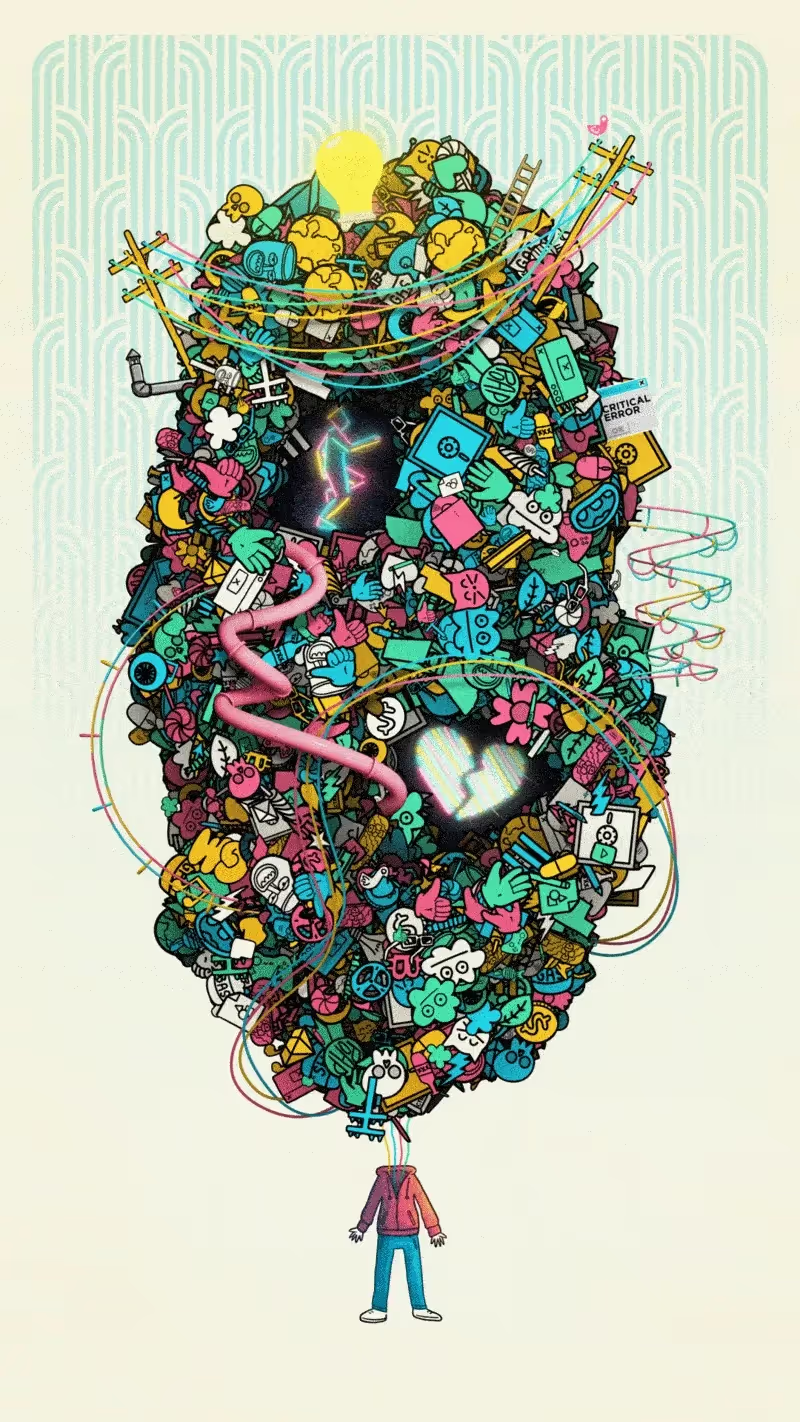
OpenSea: What role does community play in your process now, especially since leaving your TV job?
Bryan Brinkman: The web3 art community has been more creatively invigorating than anything I’ve done before. At NBC, you’d make graphics and maybe catch a tweet or YouTube comment. Here, I get real-time feedback from collectors, artists, and developers. I’ve collaborated with dozens of creators—some on art, others on platform ideas. There’s a shared momentum and curiosity. You’re not just making art, but you’re also helping shape the infrastructure of a new medium.
OpenSea: Given that, how do you choose what projects to say yes to?
Bryan Brinkman: I look for projects that feel new, exciting, or that highlight something important about the space. I try not to advise too many projects, but I do give feedback freely to platforms because I want to make the space better for everyone. As for my own drops, I gravitate toward platforms that help with storytelling and marketing—it’s helpful when someone else can frame the work so I don’t feel like I’m just shilling myself.
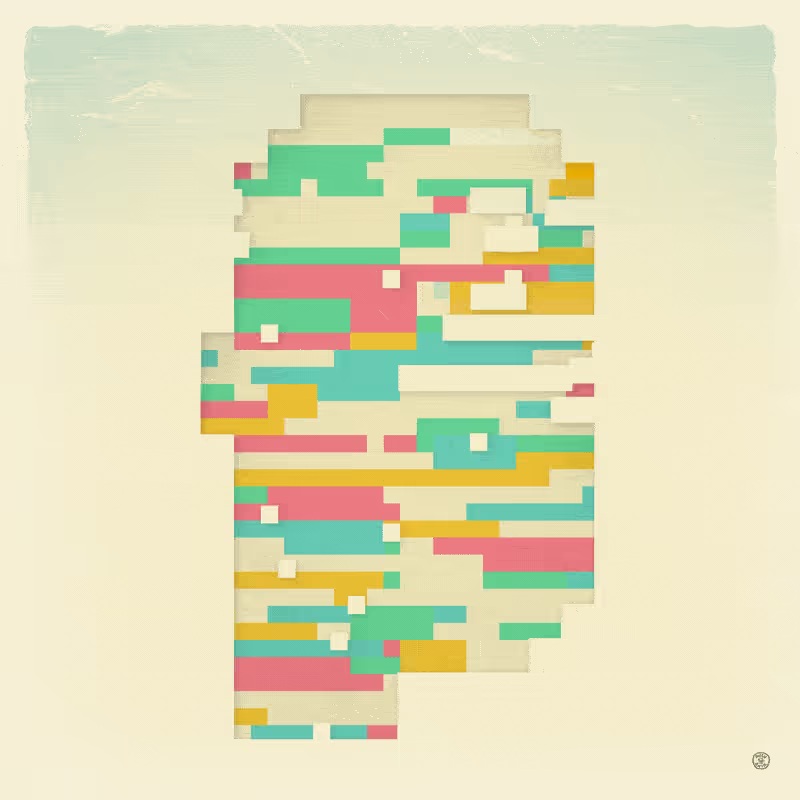
OpenSea: Your work seems to combine humor and more thoughtful commentary. Do you see satire as a core part of your art? I have to ask about the Razzlekhan portrait you created for CoinDesk’s Most Influential list. That piece cracked me up—it was so absurd in the best way.
Bryan Brinkman: CoinDesk tapped me for their Most Influential list, and they assigned me to create a portrait of her. She was one of the people they named that year. So it wasn’t necessarily my artistic choice to feature her, but I rolled with it, and it was a lot of fun. Funny enough I ended up getting to connect and meet with her afterward too which was a blast.
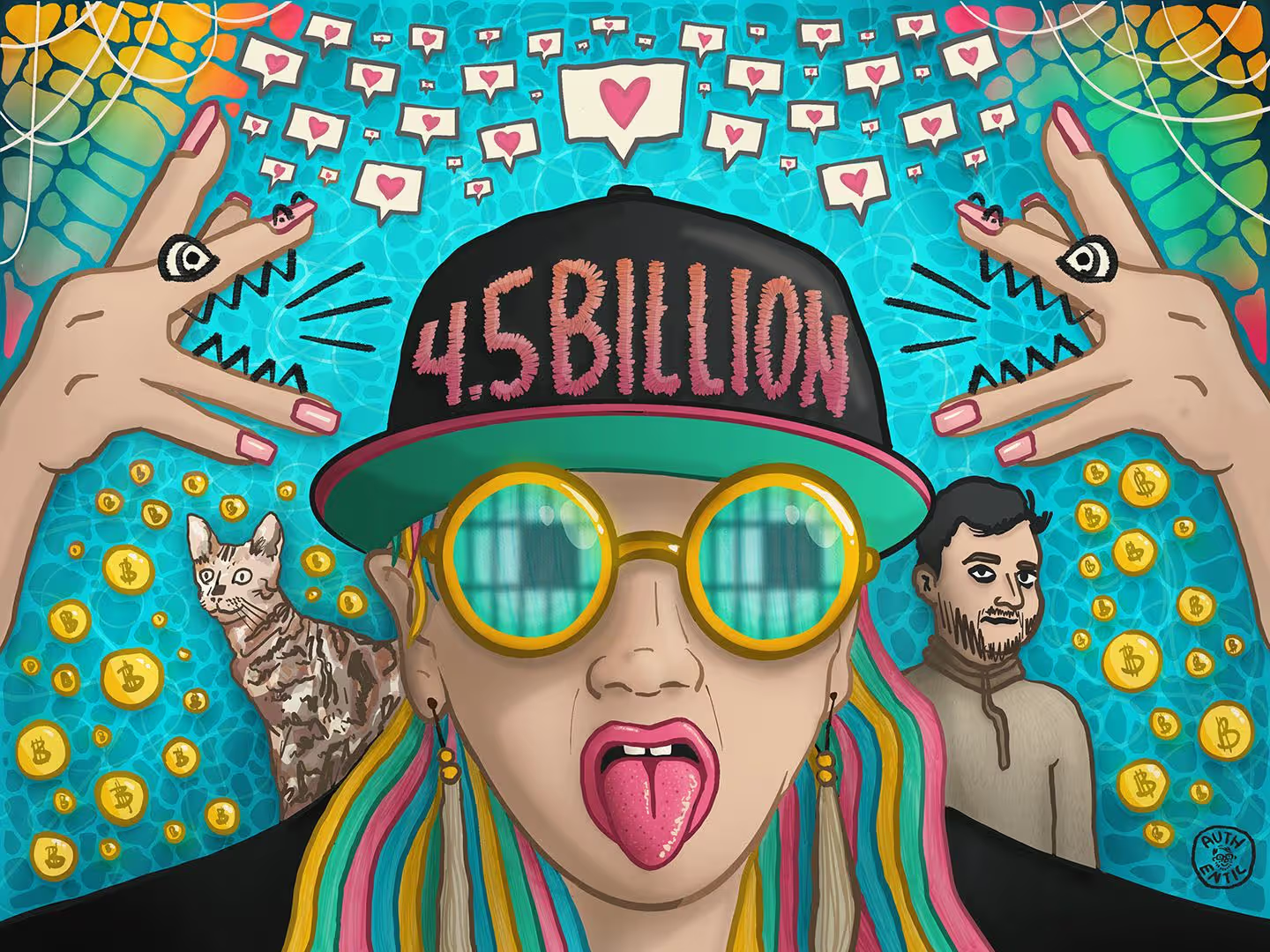
OpenSea: That’s wild. Did she give you any feedback about the piece?
Brinkman: She said, “I love it—except you made my hair multicolored, and my hair’s not multicolored.” I was like, “Yeah, I know—that’s just the style I use.” She was fine with it, and overall really enjoyed it, just very specific about the hair. Didn’t seem to care that I made the reflections in her sunglasses look like prison bars, which was a relief.
OpenSea: Incredible. Now let’s pivot to your broader body of work. You’ve said The Brinkman Estate is about preservation. What does that look like practically speaking? Do you think about it at the level of metadata? Is all the metadata on chain with the pieces in your estate? And how did you come to that decision?
Bryan Brinkman: Right now, I have a handful of projects on-chain. The challenge is that artists often work across different platforms, so we don’t always control how our work is preserved. It’s on us to piece it together, make it as strong as we can, and plan for when things eventually go offline. The real question is, how do we fix it? That might mean wrapping NFTs, re-minting them, or finding another solution. I’ve always believed that as long as I’m around, I can fix any of those problems. That’s my version of a lifetime guarantee. But once I’m gone, it will be harder to figure things out. Hopefully, with my estate and other plans, someone will keep these works preserved.
What drew me to blockchain art in the first place was the idea that it could last as long as Ethereum, Bitcoin, and other chains continue to run. Hard drives and tape don’t last forever. But if the internet and these systems stay up, digital art has a real chance to survive long-term.
OpenSea: So what’s next in your narrative? What should collectors know and what can they look forward to?
Bryan Brinkman: I’ve been doing a few collaborations lately. My collab with Josie Bellini and Drifters just dropped, so I’m excited to see how people react to that.
I also just finished a piece with Eddie Wharton—it’s this interactive data artwork that maps out my five years in NFTs. You can click around and see how I’ve released work over time, which was a really fun way to look back.
Lately, I’ve been enjoying finding ways to highlight past work just as much as putting out new stuff. And I’ve got a few more projects coming up this summer that I’m pretty excited about. There’s a gallery one-of-one in the works, and… some other things I probably shouldn’t talk too much about yet. I’m feeling good about this summer. Usually it’s a bit of a slower season, but things seem to be heating up—so who knows?
OpenSea: How exciting! Where can people follow your work?
Bryan Brinkman: Twitter’s the best—@BryanBrinkman. I also have a collector's Discord and my website, bryanbrinkman.com.
OpenSea: Bryan, thank you so much for sharing your time and insight with us. It’s been a pleasure exploring your journey and creative vision.
Bryan Brinkman: Thank you for the thoughtful questions. It’s always great to reflect on where we’ve been, where we’re going. It should be, hopefully, good stuff ahead. But again, thank you for interviewing me and including me.
.avif)


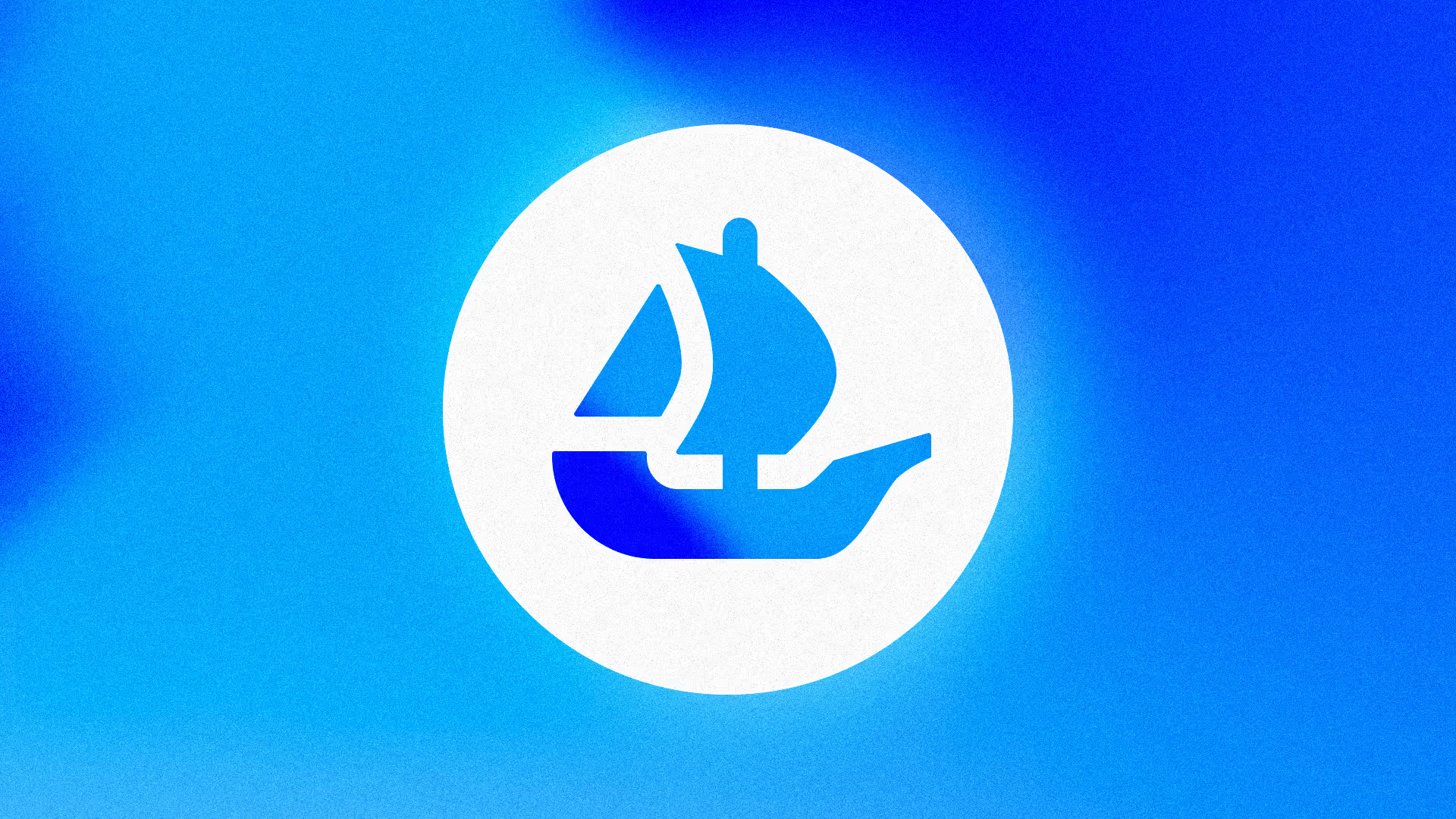
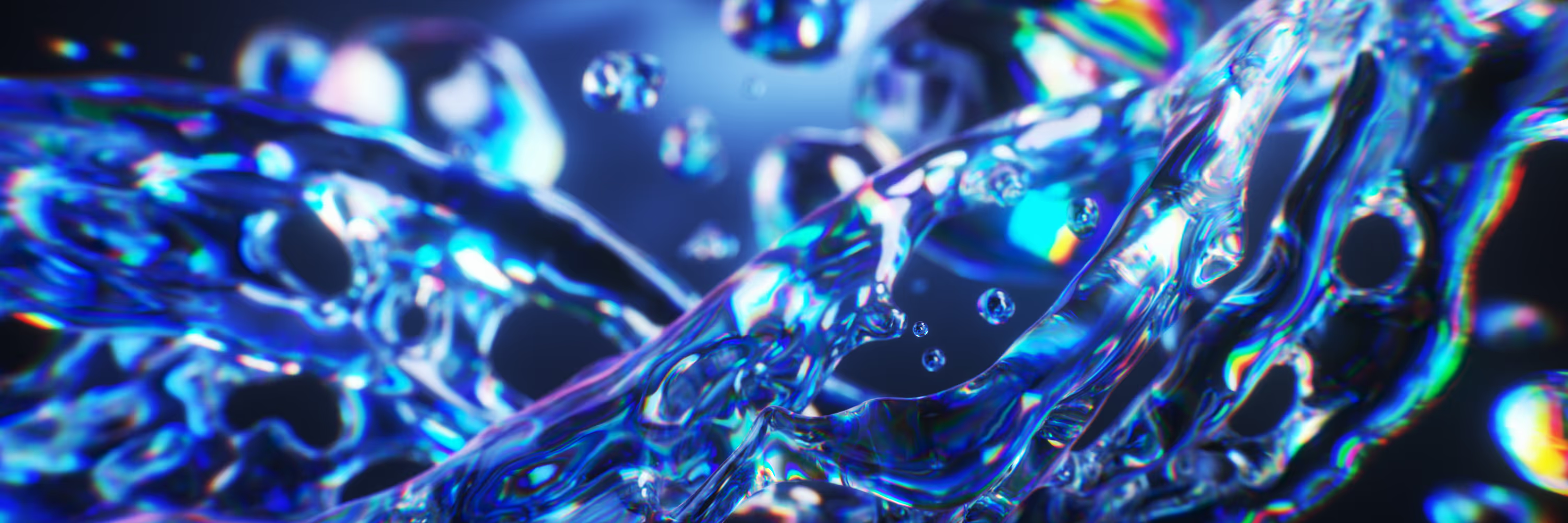
.avif)
.png)
.png)
.png)




.png)